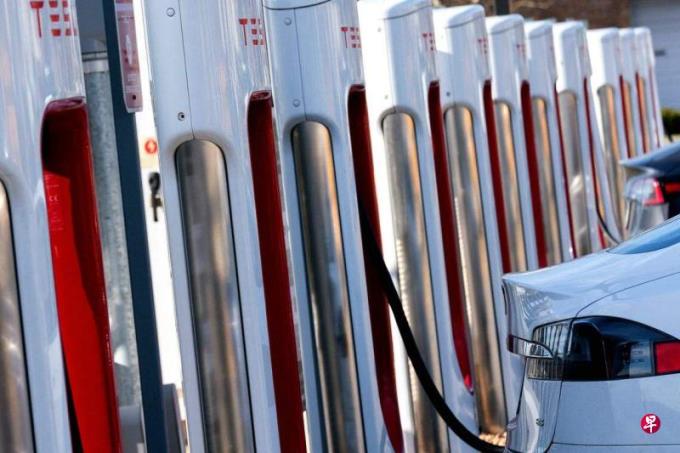
Singapore has a strong talent pool and intellectual property protection, as well as closely related scientific research and industrial ecosystems, can play a key role in the development of advanced battery technology, especially in Southeast AsiaThe direction moves.
You may have noticed that more and more Electric Vehice (EV) is driving on the Singapore Highway.Last year alone, electric vehicles accounted for nearly 20%of the registered number of local new vehicles, which was almost twice as twice as 12%in 2022. It can be seen that electric vehicles are increasingly popular worldwide.
According to the green development blueprint of Singapore, Singapore will stop registering for internal combustion engine vehicles from 2030, and before 2040, it will gradually replace various types of internal combustion engine vehicles in order to achieve net zero -carbon emissions by 2050 by 2050Objective.The government estimates that if all local light vehicles are driven by electricity, Singapore's emissions can be reduced by about 4%.
However, people still have concerns about the safety and sustainability of electric vehicles, which may hinder this transformation.People's concerns are mainly concentrated in the most important part of electric vehicles -batteries.In order to encourage more people to use electric vehicles, we should focus on developing safer and more environmentally friendly electric vehicle batteries, such as innovation in materials and design, and using technology to strengthen the testing and recycling of electric vehicle batteries.
Strengthen the safety of electric vehicle batteries
Although the fire battery fire occasionally appeared on the media headlines, statistical data show that this risk has been exaggerated.In fact, internal combustion engine vehicles are easier to get angry.A report based on global data shows that the risk of internal combustion engine cars is 80 times higher than that of electric vehicles.
Nevertheless, it must be pointed out that after the lithium -ion battery used by most electric vehicles, it may be much more rare to extinguish fires than gasoline.The lithium -ion battery of the fire needs to be extinguished with more water, which will release more toxic gases, and it may be re -burned after extinguishing.
One of the ways to improve the safety of electric vehicle battery is to explore how to develop more secure alternatives to replace traditional lithium -ion batteries that use flammable organic liquid electrolytes.Scientists at the National University of Singapore have developed a sodium ion battery, which is not easy to get angry than lithium -ion batteries, but it is also long -lasting and reliable.
At the same time, it is also important to add passive and active protection measures in the design of the battery pack.The electric vehicle battery pack can use the battery management system to track and control parameters of the battery voltage, current, and temperature to make the charging and discharge more secure, thereby reducing the possibility of fire.
Singapore Science and Technology Research Bureau (A*Star, referred to as new scientific research) cooperates with many colleges and universities to develop solutions to improve the safety and performance of electric vehicle batteries.Singapore Battery Pack Programme is a cooperation project of Nanyang University of Science and Technology, New Scientific Research, National University and Singapore University of Science and Technology (SUTD). It aims to promote the design of battery packs and improve performance and security.In order to prevent the battery's overheating, new scientific research is also developing an immersion cooling system to strengthen the management of electric vehicle battery heat.
New scientific research also cooperates with NTU and Singapore University of Technology (SIT) to create a cognitive digital twin system in battery packs.The system can use digital technology to provide users with real -time overview of battery performance statistics, and better estimate the battery life.
The new new scientific research battery testing facility is one of the largest similar facilities in Southeast Asia. It can provide a wide range of battery testing equipment to support the more secure, reliable and sustainable battery in public and private fields.It can perform performance and abuse tests to ensure that the battery can run safely under normal and pressure conditions.These tests are very important for whether the battery meets the standards and regulations, and it is essential for product manufacturers to reduce the fault.
How to reduce the hidden cost of electric vehicle battery
Electric vehicles are often considered "more environmentally friendly" than internal combustion engines because it uses electricity rather than fossil fuel, but the actual situation is more complicated.Although electric vehicles do not produce tail gas emissions (ie, exhaust gas generated by fuel), the carbon footprint produced by electric vehicles is higher than internal combustion engine cars.A study found that general electric vehicles need to drive about 20,000 kilometers to achieve the average carbon emissions with internal combustion engine vehicles, or to achieve a carbon emission revenue and expenditure balance within the service life of the vehicle.
One of the main reasons is the production process of lithium ion batteries used by electric vehicles and requires a large amount of energy.The process of mining and refining key minerals (such as lithium, cobalt, and nickel), the process of manufacturing electrode materials and the manufacturing battery core requires a lot of energy, resulting in a large amount of greenhouse gas emissions.
There are some ways to reduce the carbon footprint of the battery, including using renewable energy and advanced manufacturing solutions, such as emerging dry batteries.Battery recycling and reuse are important for reducing the overall carbon footprint and making battery production more sustainable.The new scientific research electric vehicle battery testing and disassembly line, by automating the battery disassembly process, increases the efficiency of battery recycling and reuse by about 50%.In addition, new scientific research is also developing a scrap battery health status evaluation system to better determine whether the battery is suitable for recycling and reuse at the end of life.
Singapore has a strong talent pool and intellectual property protection, as well as closely related scientific research and industrial ecosystems, which can play a key role in the development of advanced battery technology, especially in Southeast Asia in the direction of becoming a battery technology innovation hubEssence
Battery research and development has huge potential economic benefits: It is expected that from 2024 to 2028, Asian electric vehicle sales will increase an average of 22%per year.Southeast Asia has announced that the battery core production capacity exceeds 50 GWH (GWH), which will help meet the growing needs of battery in the world.
The Singapore Battery Alliance is actively working with partners in the ecosystem to promote the development of battery technology and create value for the region.By developing innovative battery technology, we can accelerate the future development of electric vehicles and make the entire traffic system safer and more environmentally friendly.
The author is the deputy dean of the New Scientific Research Materials Research and Engineering Research Institute (IMRE) and the technical director of Singapore Battery Research Enterprise Joint Platform (SBC)
Translation of Lin Huihui
The "Scientific Star language" column is cooperated with the United Morning Post and the Singapore Science and Technology Research Bureau to launch every month




